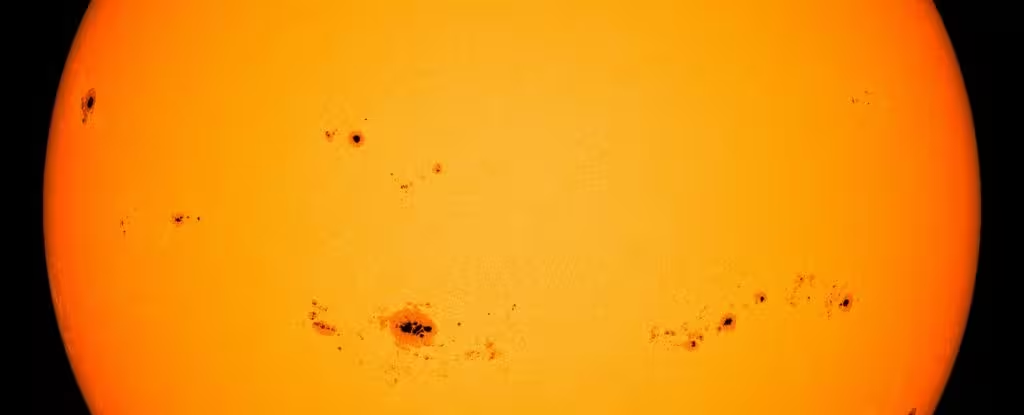Get ready, Earthlings: NASA, NOAA, and the Solar Cycle Forecast Panel have officially announced the start of solar maximum. What does this mean?
Our Sun is reaching the peak of its 11-year activity cycle at a time when sunspots, solar flares, and coronal mass ejections are rapidly increasing. So we will continue to see a lot of noise from the Sun in the coming months.
At some point in the midst of all this turmoil and chaos, the Sun’s magnetic poles will shift and activity will begin to decline, moving towards a lull in the solar cycle known as a solar minimum. But we won’t know exactly when that will happen until the solar maximum is over.
“This announcement does not mean that this is the peak of solar activity that we will see in this solar cycle,” NOAA meteorologist Elsaid Talaat said. “As the Sun reaches its solar maximum, the month in which solar activity peaks on the Sun will not be determined for months or years.”
The Sun is a reliable presence in our lives and this is good news for us as it is vital to our existence on this planet. But this does not mean that the Sun is fixed in nature: Our star undergoes its own changes, one of which is an 11-year cycle of activity.
To be honest, we don’t know much about what drives these cycles: it’s actually quite difficult to understand what’s going on inside the Sun. Each cycle lasts approximately 11 years, although their exact duration varies. We cannot predict with certainty how long it will last, how strong it will be, or even when the maximum and minimum will occur.
“We cannot reliably predict solar cycles,” solar astrophysicist Michael Wheatland of the University of Sydney, Australia, told ScienceAlert in 2022. “We do not fully understand the solar dynamo that produces the magnetic fields and explosions seen on the surface as sunspots. This is one of the outstanding problems of astrophysics.”
But we know how the solar cycle manifests itself, and solar scientists and meteorologists can use these signs to follow this cycle.
An important indicator is sunspots; Regions on the Sun’s surface where the magnetic field is temporarily super strong and entangled, blocking the flow of hot plasma, making the region cooler and darker than the surrounding solar surface.
Solar minimum is the time when sunspots are least common. Solar maximum is when sunspots dot the surface like freckles on a kissed nose. And with them come massive solar flares.
When the tangled magnetic field lines on sunspots break and recombine, they explode into powerful bursts of light and energy; These are solar flares. Sometimes they violently eject billions of tons of solar particles and magnetic fields as they fly across the solar system; these are coronal mass excretions.
Both phenomena may have an impact on Earth. Solar flares can cause the radio to shut down. When coronal mass ejections hit the magnetic field that protects the Earth, they create a phenomenon known as geomagnetic storms.
They can be more dangerous by producing currents that can disrupt electrical grids, interfere with communications and navigation, and disrupt satellite operations. But they also create striking auroras when solar particles interact with particles in Earth’s upper atmosphere. That’s why we saw so many aurora borealis this year.
But as far as we know, nothing is at stake. It’s true that the current solar cycle is significantly stronger than NASA and NOAA’s initial predictions, but it’s not the strongest solar cycle we’ve ever seen and it’s still within normal limits. The most powerful eruption of the current cycle was the X9.0 eruption that erupted on October 4, and although it ranks among the top 20 eruptions ever measured, there are also some absolute monsters on this list that you probably didn’t notice.
In the meantime, an interesting analysis needs to be done. Although official predictions of the solar cycle were lower than what actually happened, some scientists predicted a powerful cycle with much higher accuracy. This could have some very interesting implications for our understanding of how the Sun works and the models we use to predict solar cycles in the future.
So fasten your seat belts. Maybe we are facing stormy space weather. And some fascinating new information about the mysterious ways of our wonderful Sun.
Source: Port Altele
